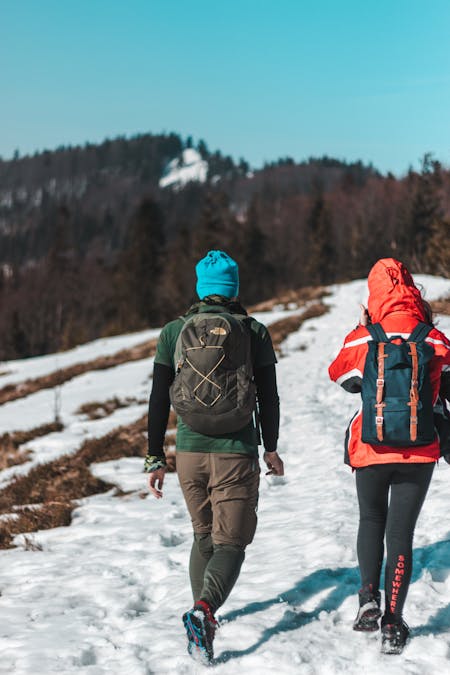
If you’ve ever gone hiking, you know that the gear you carry can make or break your experience. With so many options available, the concept of ultralight hiking has become increasingly popular. So, what is ultralight hiking, and how can it enhance your outdoor adventures? Let’s dive in!
A Brief Journey Into Ultralight Hiking
Ultralight hiking began making its mark on U.S. long trails over 25 years ago, born from the desire to minimize pack weight. The goal? To make hiking more enjoyable and less physically demanding. Whether you’re a seasoned hiker or just starting out, understanding ultralight hiking can transform your adventures.
Defining the Weight Categories
When discussing ultralight hiking, it’s essential to understand the different weight categories for your gear. Base weight refers to the total weight of your gear—excluding consumables like food and water. Here’s a quick breakdown:
- Heavyweight: Over 20 lb (10 kg)
- Lightweight: 12-20 lb (5-10 kg)
- Ultralight (UL): 6-11 lb (3-5 kg)
- Super Ultralight (SUL): Under 6 lb (3 kg)
Hikers can be categorized as Minimalist, Ultralight, Lightweight, or Too Much —each with different approaches to gear selection.
The Benefits of Ultralight Hiking
Why go ultralight? Here are some key advantages:
- Reduced Physical Strain: Less weight means less physical discomfort, making it easier to hike longer distances.
- Increased Enjoyment: With a lighter pack, you can focus on the beauty of nature rather than the burden on your back.
Key Concepts for Ultralight Hiking
If you’re intrigued by the idea of ultralight hiking, consider these key concepts:
- Choose the Lightest Suitable Gear: Aim for lightweight options without sacrificing quality.
- Pack Only Essentials: Learn to differentiate between needs and wants.
- Modify Gear Carefully: Make adjustments to your gear to cut down on weight, but do so thoughtfully.
- Pack and Repack: Continually evaluate your gear to see what is essential and what you can leave behind.
- Explore DIY Gear Options: Building your own gear can be a satisfying way to cut costs and customize your offerings.
- Keep a Record: Document and weigh your gear to ensure you’re staying on track with your ultralight goals.
Challenges You May Encounter
While ultralight hiking sounds appealing, it does come with its challenges:
- Adapting to Weather: Different conditions may require specific gear, complicating your ultralight efforts.
- Essential Gear: Some items (like first aid kits) are necessary to carry, even if they’re not used often.
- Balancing Weight and Preparedness: Finding the right balance between cutting weight and being prepared for emergencies is critical.
- DIY Time Constraints: Crafting your own gear can take considerable time and may not always match the quality of commercially available options.
Relative Weight Considerations
Physical size plays a significant role in how much weight you should be carrying. A common guideline suggests that your pack weight should not exceed 20-30% of your body weight. If you’re pushing past that 30% threshold, it may be time to lighten your load!
Practical Tips for Ultralight Hiking
Thinking about jumping into ultralight hiking? Here are some practical tips to get you started:
- Bring Less Stuff: Keep your pack streamlined by only including essential items.
- Focus on the Big Three: The sleeping system, shelter, and backpack are key components; target around 6.5 lbs combined weight for these items.
- Upgrade Wisely: When considering gear upgrades, focus on aspects that will make a significant impact, like your sleep system, but keep affordability in mind.
- Food Choices Matter: Opt for high-calorie, compact foods. If you’re comfortable, consider going stoveless to save additional weight.
- Source Gear Smartly: Take advantage of increased access to ultralight gear from cottage manufacturers, and think about making your own gear for savings and customization.
- Stay Fit: A good fitness level will help you handle a heavier load more easily and reduce strain on your body.
My Final Thoughts
At the end of the day, comfort is key. Just because you’re pursuing an ultralight approach doesn’t mean you have to sacrifice your comfort. It’s perfectly valid to carry a few extra items if it enhances your hiking experience.
Every hiker’s journey is unique, so take time to evaluate your gear usage after each trip. Tailor your pack list to suit your adventures, ensuring safety and enjoyment every step of the way.
Now that you’re armed with a better understanding of ultralight hiking, why not give it a try? Lightening your load could open up new paths for you both physically and mentally on your hiking adventures! Happy hiking!
Are you an ultralighter or a traditionalist when it comes to pack weight? share your thoughts or ask a question here.
